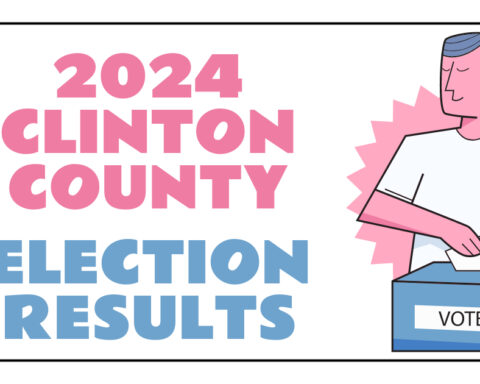FRANKFORT, Ind. – A proposed $200 million solar project, to be located in the northeast portion of Clinton County, took another step closer to breaking ground when the six members of the County’s Area Plan Commission gave unanimous approval Thursday evening, at the Edward Jones Community Building located at the Fairgrounds, of the Chicago-based Invenergy, LLC development plan of their Hardy Hills Solar project.
The Hardy Hills Solar project would be constructed on 1,778 acres within the previously approved solar overlay district on land around Kilmore, extending as far west as N. Co. Road 130 W., as far east as N. Co. Road 100 E., north just beyond E. Co. Road 500 N., and as far south as E. Co. Road 250 N.
“Even though the project has leased a little less than 1,800 acres, because of all of the various things that are happening on the land – flood plans, wetlands, transmission line, setback areas from houses, drainage ditches and just various things that we are avoiding – wooded lots, we are only putting panels at a little less than 1,200 acres,” said Katya Samoteskul, manager of renewable development with Invenergy LLC.
“The other parts, the large areas will be released to the landowners if they want to farm it again or they will be vegetated and it will be part of the project, but will not be actually used for panels.”
In addition to the solar overlay district previously put in place, the various Clinton County government bodies had given approval with respect to the drainage plan, a road use agreement, and a property tax abatement and economic development agreement.
This will be the largest single investment in Clinton County according to Samoteskul.
“The project would be about $200 million investment so a very significant investment in Clinton County,” said Samoteskul. “In terms of property taxes that we are estimating the project will pay – about $38 million over its life, 35-years. Then we are also going to be paying $3.1 million in economic development payments.
“So, property taxes would go to the taxing districts – the school, the township, the roads, the County. The economic development payments are just the money that the County gets and then decides how to spend it.
“And to put this into some perspective, unlike other investments that would require County services, a solar project doesn’t require any inputs from the County – there is no investment in roads, or sewage treatment plants, or kids to educate – it’s all just an added benefit to the County because it doesn’t have to spend any money to bring us here.”
The project will create 3 to 4 permanent, local operations and maintenance jobs according to the presentation given. During the construction phase, some 200 to 250 workers will be on site.
An estimated $60 million in payments to participating landowners will be made over the life of the project.
“We have spent almost a year now working on this and trying to get it right,” said Dan Sheets, president of the APC and Clinton County Surveyor. “And, I think we are as close as we could hope to ever to get this project right. I think this will be a great benefit for Clinton County. I am excited about it, I think it is going to be a fantastic deal.
“We believe this project will be a benefit to the County. We’re looking at additional tax revenue. For me personally, it is stabilization of the ground out there. There is some rough farm ground where we do have erosion problems particularly over some of our legal drains and this will solve that problem.
“I believe once it is here for a few years you won’t notice it being here and all in all it is a really green project. I know we need this. I have talked to my children and their friends about this – they are the future. This is what they see and this is what they want. I think we did the right thing tonight.”
Jordan Brewer, Clinton County District 3 Commissioner and member of the APC, spoke of the work that has gone into this multi-year project.
“I think it is a great day for Clinton County,” said Brewer. “There’s a lot of people that have been involved in this process. It started all the way back in 2017 and we’re finally here where we’re moving forward with the development of the solar project.
“I think from a Commissioner’s standpoint, these are the type of infrastructure [projects] that we have to bring to our community to continue to grow and to grow our revenue base and our economic development going forward.”
Prior to construction beginning, there are two additional items that need to be completed. First, agreement on a decommissioning plan. The decommissioning plan is required by County ordinance and outlines how the project will end once it reaches its life span and requires a bond to be posted before construction with an adjustment of the bond amount every 5 years.
The final item is the actual construction permits. The projected time for permitting is winter 2020 with construction to begin late 2021 and continue through mid-2023 with operations to go online in mid-2023.
Although construction is still months away, Invenergy has made donations within the community.
“We have donated to the YMCA at the beginning of COVID,” said Samoteskul. “We heard that they were helping with childcare to essential workers and we also contributed to the EMS building that the County is planning to build on the eastern side. We heard that was important. Typically, once these projects are operational our technicians live in the community because it is an everyday job and there is always some sort of programs or dinners or sponsorship that we do for a local community.”






